I grew up with five older siblings. We had around the house lots of books and toys from eras past, representing the accumulated passing interests of a slew of children. I never knew where most of the stuff came from or to whom it originally belonged. It was just there. Of these random vintage possessions, the most influential on my development were two books by Walter T. Foster (1891-1981), “How to Draw” and “How to Draw Horses”. My cousin and I spent hours on end with the horse book, first copying the drawings, and then using his method of constructing the animal out of ovals, boxes, and lines (which also happened to be WTF’s method for drawing grapes, humans, landscapes, and most of the visible world).
These kinds of how-to books are a remnant of a time in America when leisure time was newly accessible to a wider demographic (thanks, labor movement) and their proliferation testament to the new consumer hobby market publishers sought to tap. Most of the authors were successful commercial illustrators and admen pitching their foolproof, easy methods to a public with time on their hands and an admirable wish to better themselves, for fun or profit or both. Unlike similar ventures into this market, for instance, paint-by-number, these books actually taught you a skill, and could be a starting point for a budding serious artist who found them lying around the house. They vary widely in their usefulness, production values, and applicability to fine art, but they all share an insistence that ANYONE CAN LEARN TO DRAW!
These are a few from my present-day collection.
Walter T. Foster was possibly the most prolific of the bunch, and he was more geared toward realism than those who were riding the comic book wave of the 1940’s and 50’s. He began his own publishing company, Walter T. Foster Publishing, which produced other artists’ how-to books as well as his own. Possibly one reason he could be so prolific can be found in the off-the-cuff, sketchbook quality of his books. They are full of bits of advice, hand-written in pencil, that usually, but not always, correspond to the illustrations, as if he just remembered something important and had to write it in the interstices of the drawings before it slipped his mind. Sometimes the drawings run right off the page. Possibly they are just his sketchbooks, barely edited and annotated.
He’s full of advice and encouragement. In the example above he is mighty specific about the exact size of drawing board you should use, as well as where you should lean it. Elsewhere, after laying out the 1/3 rule of composition, he exhorts:
Don’t hold to any cut-and-dried rules. Think for yourself and apply what you learn from all sources.
On drawing a vase of flowers:
Fine, go ahead, but if you have trouble just know it isn’t an easy thing to do.
Many of his snippets of wisdom are indeed signed “W.T.F.”
Here’s a helpful, if confusing, hint on the pitfalls in composition, which also looks like a recipe for a successful cubist painting:
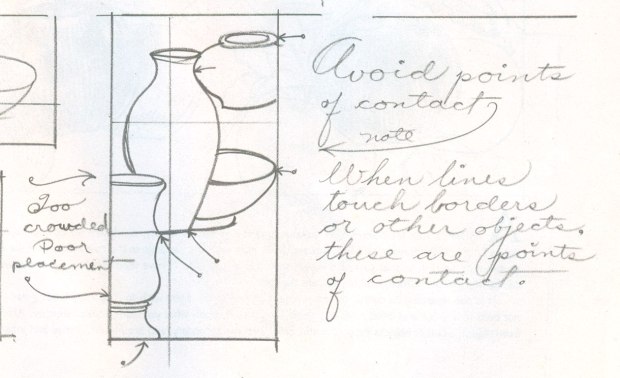
The irrepressible Andrew Loomis, author of “Fun With A Pencil”, mixes instructions for drawing cartoon caricatures right in more with realistic figures and perspective theory. His formulas are rather more formulaic, but he also proves a pleasant companion for your drawing journey. “Never mind if they are a little off” is timeless advice for learning any new skill, and people particularly need to hear it when they’re drawing, since the disastrous results of early attempts are always staring you in the face.
This chart of standard facial measurements is from 1939, so we’ll cut him some slack on his ethnocentricity, of which, trust me, this is a more mild example:
The ideal American is not only white, chiseled, and afflicted with lines all over their face, but is also possibly transgender. Note the identical features transposed from Mr. Ideal American to Ms. Ideal American.
Actually, I do hand out a version of that formula to beginning students tackling portraits for the first time. I find it helps them to see what’s in front of them, and usually if not always keeps them from putting the eyes at the very top of the head. I do add the warning, “actual results may vary,” which one should keep in mind regardless of the subject’s ethnicity.
I’m not entirely sure what this diagram is supposed to represent. It doesn’t even really make sense internally: why is the brow line perpendicular to the ear line? And, besides, one should NEVER use a real knife to draw another human. While we’re at it, let me also state that real children should never be allowed to play unsupervised with perspective.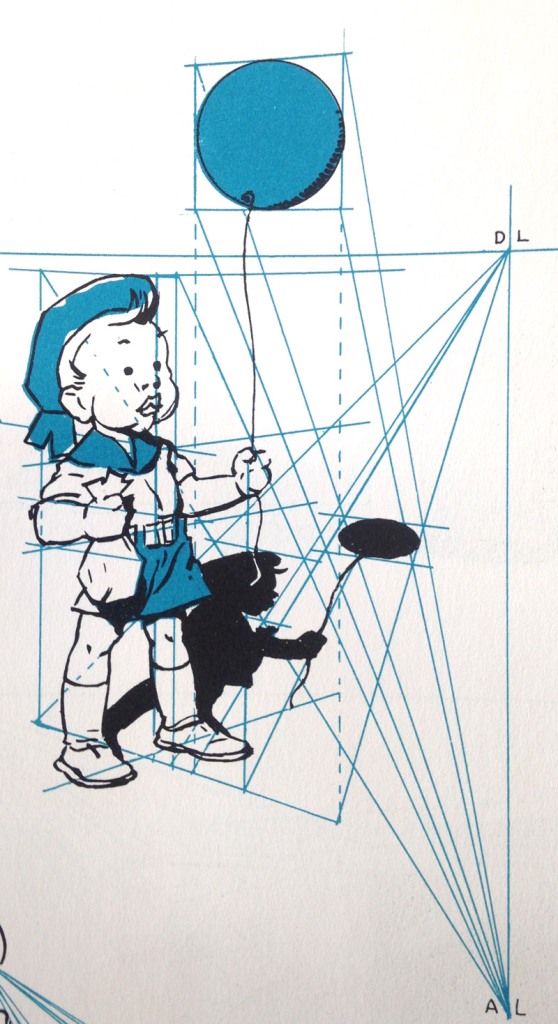
Next to the Ideal American, the most important formula for the budding commercial illustrator to have in their back pocket was the Pretty Girl, the pleasingness of which, according to Loomis, is “99% in how well you draw it”. Incidentally, this validates Jessica Rabbit’s oft-quoted observation that she wasn’t bad, just drawn that way.
Even into the late 1960’s, it was still important to keep those gender roles straight when learning to draw.
George Carlson, author of “I CAN DRAW!”, from which those were taken, was no Walter T. Foster, but WTF is a valid response to these unhelpful diagrams. This book was aimed at children, but evinces little respect for their ability to distinguish drawing from tracing dotted lines. What is “The head is drawn this way” supposed to mean? Those are two identical pictures, except one is red and one is black with an arrow pointing toward it, but no further instructions.
W.T.F. himself wasn’t immune from the illustrative conventions of his time, either. In his books, men’s hands are to be drawn realistically, while ladies’ hands tend to taper unnaturally.
In my experience, drawing a “leaf shape” first has never, ever been helpful in drawing a hand. It is only helpful in drawing a leaf. You can’t argue with this, though:
Hands are not easy to draw and you should devote much time to them.
Unlike the learn-to-draw-in-five-days-and-get-rich school of art instruction, Foster doesn’t sugarcoat the sheer hours and sweat it takes to learn to draw. You can tell he really loved his vocation and wanted to make it accessible to anyone with the inclination. As a child I had the inclination but I didn’t know any artists (or horses for that matter). Doing the exercises in his books gave my initial inclination some focus and direction. Breaking horses down into their component ovals, however formulaic, demystified drawing for me. I started with his horses and grapes, but I kept on drawing while Foster assured me that, although it was bound to be difficult, I could get it with practice. “Do not let it scare you. Just take your time.”
I will give Mr. Foster the last word:
Draw everything you see, it will come in handy when you start making a living at it. Sure you can. Try.
W.T.F.!

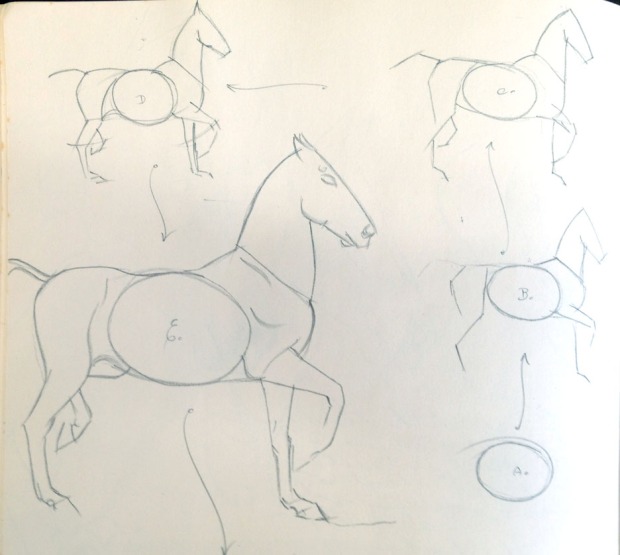
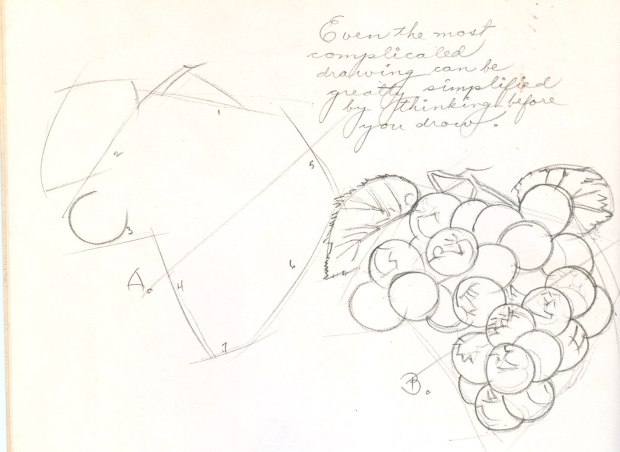
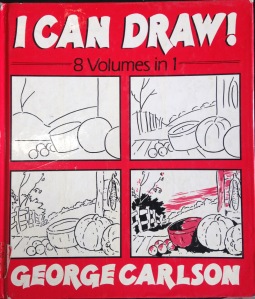
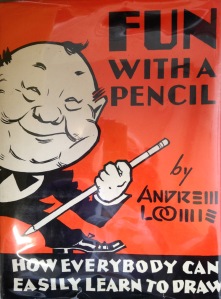
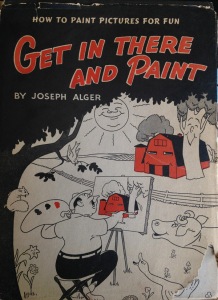
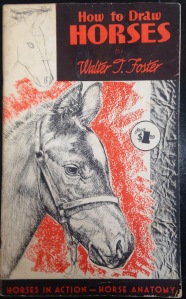
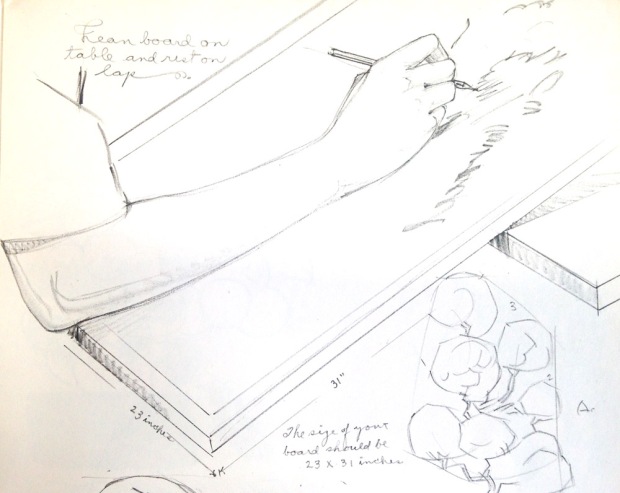
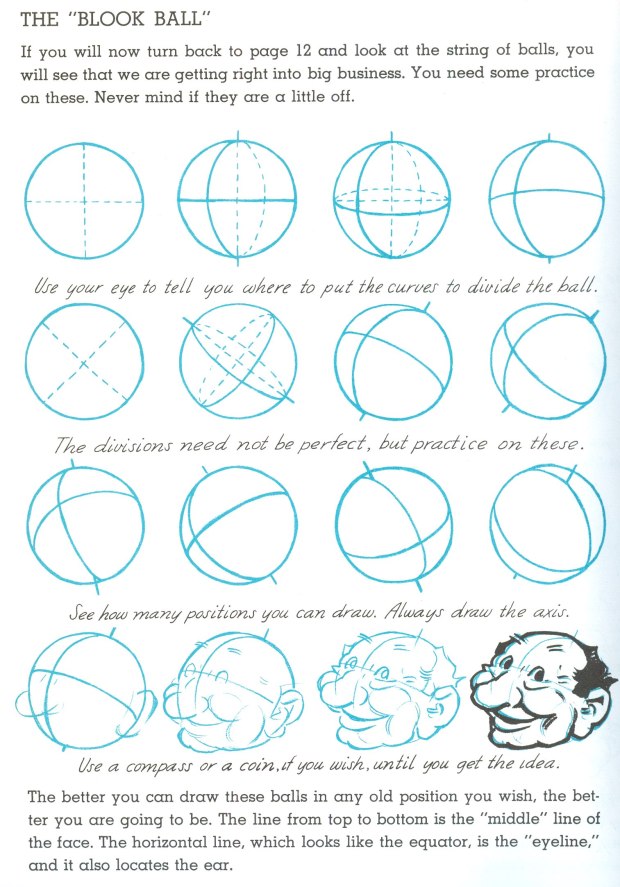
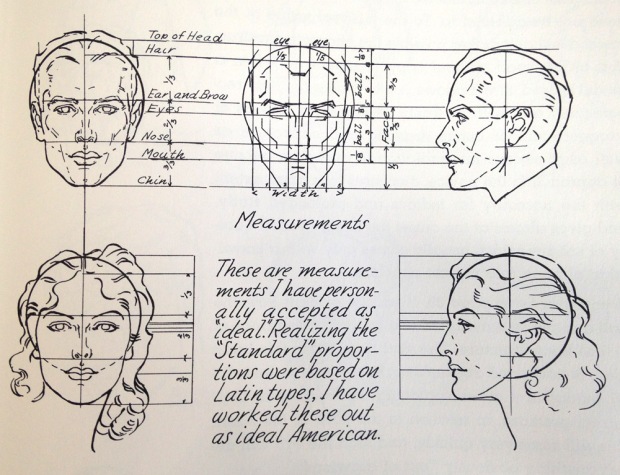
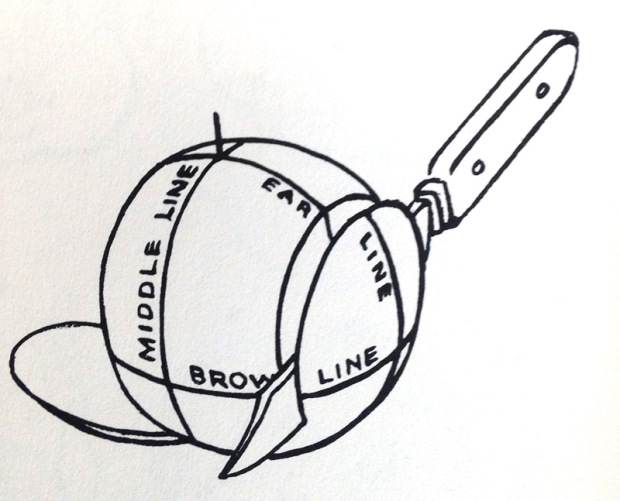
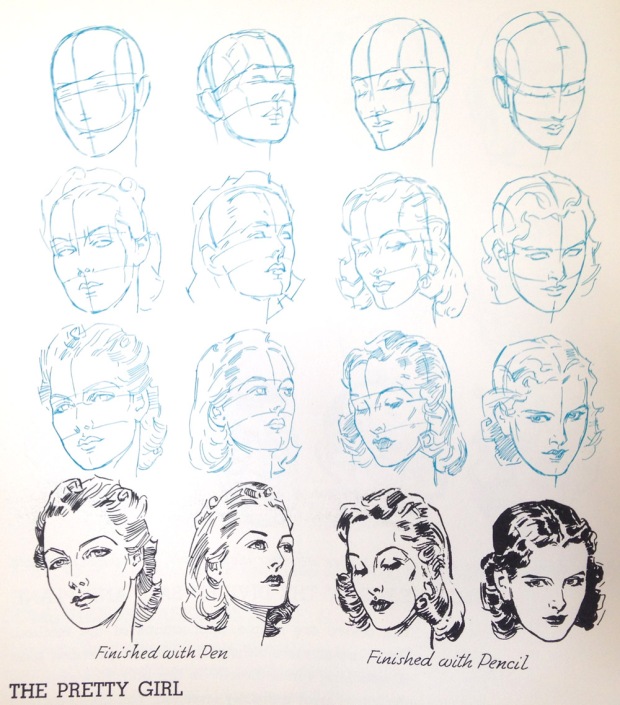

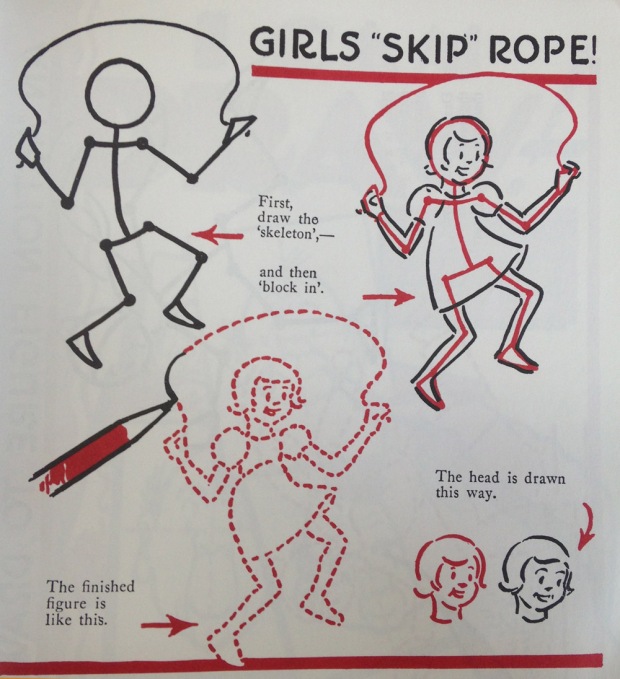
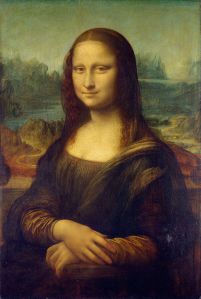
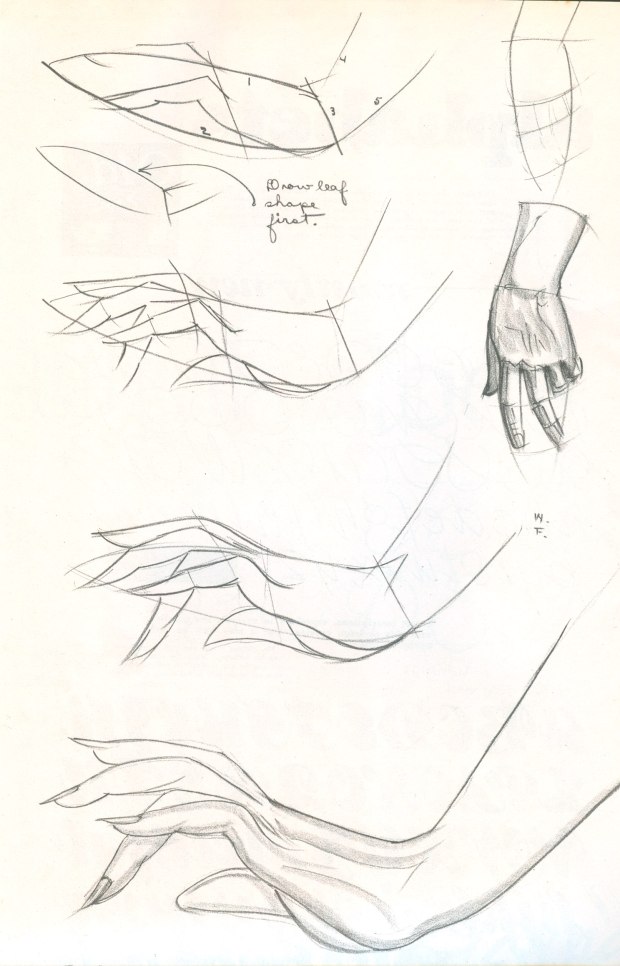
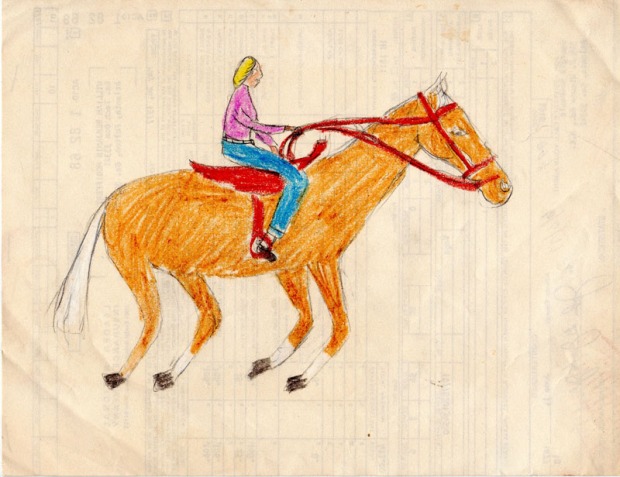
OMG, this is hilarious! WTF, indeed. Jane, your blog is the only post I read today that made me literally laughter out loud!
– Tina
this is very funny, which is not something i would have expected. thank you for your words, they are very fun to read.
Love this, especially their encouragements to do whatever, coupled with exactitude. Reminded me of learning to quilt: everything was exact, measurements could get down to 1/8 inch (or less) and sewing small pieces of cut fabric together could be an nightmare, even for the OCD-inclined (that’s me). To make matters worse, the world of quilting is judgmental about such things. Argh. But then, during my very first formal instruction, teacher Sandy Bonsib espoused the “galloping horse rule” – if you can’t see it from a galloping horse, don’t worry about it. 🙂
Bringing us full circle back to horses!